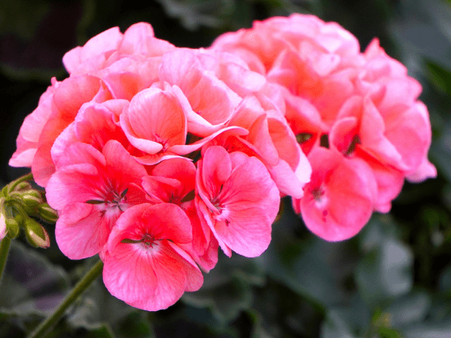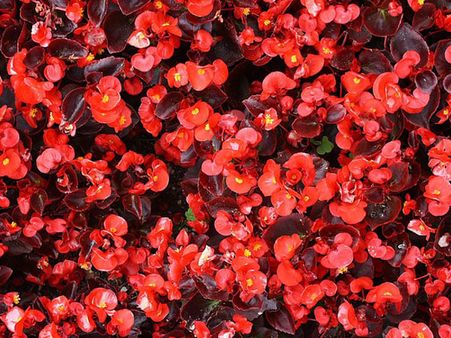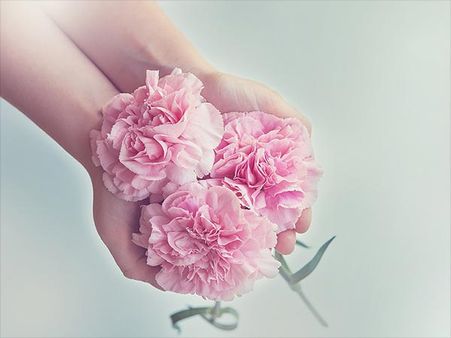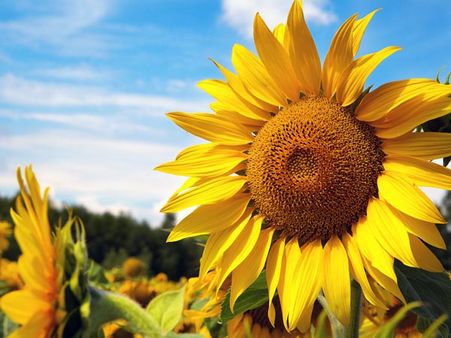Just In
- 3 hrs ago

- 12 hrs ago

- 14 hrs ago

- 15 hrs ago

Don't Miss
- Sports
 Who Won Yesterday's IPL Match 40? DC vs GT, IPL 2024 on April 24: Delhi Capitals Clinch High-Scoring Thriller At Kotla
Who Won Yesterday's IPL Match 40? DC vs GT, IPL 2024 on April 24: Delhi Capitals Clinch High-Scoring Thriller At Kotla - Education
 JEE Main 2024 Result Out on jeemain.nta.ac.in, 56 Students Secured 1st Rank With 100 Percentile
JEE Main 2024 Result Out on jeemain.nta.ac.in, 56 Students Secured 1st Rank With 100 Percentile - News
 Mangalsutra Row: Did Indira Gandhi Donate Gold During The 1962 War? The Facts Behind Priyanka's Claim
Mangalsutra Row: Did Indira Gandhi Donate Gold During The 1962 War? The Facts Behind Priyanka's Claim - Movies
 Kota Factory 3 OTT Release Date, Platform: When Will Jitendra Kumar's Web Series Premiere On Netflix?
Kota Factory 3 OTT Release Date, Platform: When Will Jitendra Kumar's Web Series Premiere On Netflix? - Travel
 Escape to Kalimpong, Gangtok, and Darjeeling with IRCTC's Tour Package; Check Itinerary
Escape to Kalimpong, Gangtok, and Darjeeling with IRCTC's Tour Package; Check Itinerary - Finance
 DCB Bank Q4 Results: PAT Grew 9% To Rs 156 Cr, NII Jumps 4.5%; Dividend Declared
DCB Bank Q4 Results: PAT Grew 9% To Rs 156 Cr, NII Jumps 4.5%; Dividend Declared - Technology
 OPPO Find X7 Ultra Camera Deep-Dive: Pushing the Boundaries of Photography on a Smartphone
OPPO Find X7 Ultra Camera Deep-Dive: Pushing the Boundaries of Photography on a Smartphone - Automobiles
 Aston Martin Vantage Launched In India At Rs 3.99 Crore
Aston Martin Vantage Launched In India At Rs 3.99 Crore
Valentine’s Day 2023: 12 Beautiful Hypoallergenic Flowers For Your Partner This V-Day
Valentine's week is around the corner and there's no better way to impress your partner than gifting their beautiful flowers. Though flowers hold great value in everyone's life, sometimes they can make life miserable due to their allergic reactions. Hypoallergenic flowers are allergy-friendly flowers that have a very low tendency to trigger allergic reactions.

Allergic reactions due to flowers can make people run for tissues due to runny nose, sneezing and coughing. They can also cause headaches, skin rashes, sore throat and itching problems in people who are highly allergic. But don't you worry, we have brought to you a list of hypoallergenic flowers which are vibrant, beautiful, low allergic and make for the best gifting option for you on valentine's Day.

Why Some Flowers Cause Allergic Reactions
Flowers can trigger a wide range of allergic symptoms which can sometimes be life-threatening. Pollen grains in flowers are the main cause of allergic reactions. They are basically a reproductive part of flowers which help them to reproduce. Pollen grains appear as a fine or coarse powdery substance which is light enough to get stirred in the air and cause adverse reactions when inhaled by humans. Usually, reactions are caused by flowers that produce more pollen or releases more pollen through the air.
When pollen grains enter our body via nose or mouth, our body treats them as foreign substances and produce histamines to fight against those grains and in the process, cause allergic symptoms like coughing, sneezing, headaches, asthma and many others. As there are many pollen-based flowers that bloom every season, pollen allergies are regarded as one of the common allergies that affect people in every season, especially in the spring season. Medical experts call pollen allergies as 'hay fever' or 'seasonal allergic rhinitis'. [1]
The chances of getting allergic reactions due to pollen grains of flowers also depend on the type of weather around us. In dry and windy days, more people get allergies while during rainy and winter days, people are less likely to get affected by pollen allergy.

Which Type Of Flowers Cause More Allergies
It's quite confusing when some flowers cause high allergic reactions while some don't. Identifying which flowers can cause more allergies depends on the gender of the plant. Male flowers are the one responsible for the production of pollen grains and causing allergies.
There are some plants which are dioecious in nature, meaning the whole plant is either male or female. Pollination in such plants is very hard as the pollen grains of the male plants need to travel long distances to reach the female plants. Winds are the only powerful communication method that can help in their transfer. [2]
The pollen grains of the dioecious flowers are usually light in weight to facilitate their transfer via winds for pollination. In the process, it gets transferred to human eyes and nose and cause allergic reactions. On the other hand, pollen grains of monoecious flowers (male and female flowers in the same plant) are large making them less transferable via wind and also attractive to pollinators like bees that help them in pollination.
Best Hypoallergenic Flowers For Your Partner

1. Daffodils
Narcissus tazetta, commonly known as daffodils are bright yellow-white flowers that grow from a bulb and occur in clusters. This hypoallergenic flower produces less pollen than other flowers which are pollinated by insects not wind.

2. Asiatic Lilies
They are one among the prized flowers which are extensively used for gifting and decoration purposes. They mainly get pollinated by butterflies, hummingbirds or bees that carry pollen from one flower to another thus, avoiding the risk of pollen allergy.

3. Carnations
Dianthus caryophyllus, commonly known as clove pink or carnations is a type of sweet-scented flower mainly produced in a group. Carnations are available in many colours. They get pollinated by butterflies and bees and are thus, hypoallergenic.

4. Geranium
They are an iconic garden flower known to beautify the place where they are grown. Wild Geranium has the ability to self-pollinate in the absence of pollinators. However, it gets pollinated by beetles, bees and flies and the chances of pollination by wind get reduced.

5. Hyacinth
They belong to the family Asparagaceae and are highly fragrant with reflexed petals. Due to the immense fragrance of hyacinth, they are more likely to attract insects like honey bees which help in their pollination.

6. Begonia
They belong to the family Begoniaceae and have more than 1800 species. They make for the best ornamental and gifting flowers. The main pollinators of begonia are Apidae and Halictidae bees.

7. Hydrangeas
These flowers are native to Asia, Japan and China and bloom in a bunch of 15-20 forming a round shape. Hydrangeas are basically sterile (not able to reproduce) flowers due to the absence of pollen or other reproductive structure. They are only known to feed pollinators due to their attractive hue.

8. Clematis
They have around 300 species and belong to the family Ranunculaceae. Pollinators like hoverflies and bees get attracted to clematis due to a sweet liquid produced in the stamens. They help in their pollination preventing the pollination via winds.

9. Orchids
They are flowering plants that belong to the family Orchidaceae. They have a vibrant purple hue and sweet fragrance. Some orchids are self-pollinating while others need pollinators like butterflies, moths and birds for reproduction.

10. Hosta
They are tiny white flowers that belong to the family Asparagaceae. Hosta flowers are engineered in such a way that they have both the male and female reproductive organs, facilitating the process of self-pollination.

11. Peonies
They are flowering plants of the family Solanaceae. Peonies are small and exotic flowers which are known to cover the entire plant when bloom. They get pollinated by bees, hummingbirds and hawkmoths by cross-pollination.

12. Roses
They are best known as an epitome of love. Roses are available in tons of colours and are hypoallergenic in nature. They are unlikely to cause allergic reactions due to low-pollen count.

Flowers To Avoid
There are certain flowers responsible for severe allergic symptoms either due to high pollen counts or light-weighted pollens that can easily be released into the air. Such flowers are not a good choice for gardening or gifting. They are as follows:
- Chamomile
- Dahlia
- Sunflowers
- Chrysanthemums
- Baby's breath
- Gerber Daisies
-
 healthCommon Allergy Triggers In India: Stay Informed And Stay Healthy
healthCommon Allergy Triggers In India: Stay Informed And Stay Healthy -
 wellnessBenefits & Uses Of Mustard Oil In Winter: Check Several Health Benefits And Ways To Use It
wellnessBenefits & Uses Of Mustard Oil In Winter: Check Several Health Benefits And Ways To Use It -
 disorders cureMonsoon Allergies: Types Of Common Allergies During The Season And Ways To Manage Them
disorders cureMonsoon Allergies: Types Of Common Allergies During The Season And Ways To Manage Them -
 wellness25 Natural Home Remedies For Allergies: You Might Not Be Knowing About Number 19
wellness25 Natural Home Remedies For Allergies: You Might Not Be Knowing About Number 19 -
 wellness15 Effective Home Remedies To Treat Or Prevent Hay Fever Symptoms
wellness15 Effective Home Remedies To Treat Or Prevent Hay Fever Symptoms -
 disorders cureHay Fever (Allergic Rhinitis): Causes, Symptoms, Risk Factors, Treatments and Prevention
disorders cureHay Fever (Allergic Rhinitis): Causes, Symptoms, Risk Factors, Treatments and Prevention -
 wellnessMonsoon Has Arrived: 12 Healthy Fruits To Get Indulged In
wellnessMonsoon Has Arrived: 12 Healthy Fruits To Get Indulged In -
 wellnessIs It Safe To Drink Urine?
wellnessIs It Safe To Drink Urine? -
 disorders cureHow To Stop Wheezing Without An Inhaler?
disorders cureHow To Stop Wheezing Without An Inhaler? -
 wellnessWhat's The Link Between Appendicitis And Allergies In Children?
wellnessWhat's The Link Between Appendicitis And Allergies In Children? -
 babyAllergies That Your Baby May Have
babyAllergies That Your Baby May Have -
 disorders cureBabies Born Via C-Section Will Be More Prone To Asthma And Allergies, Here's Why
disorders cureBabies Born Via C-Section Will Be More Prone To Asthma And Allergies, Here's Why


 Click it and Unblock the Notifications
Click it and Unblock the Notifications



